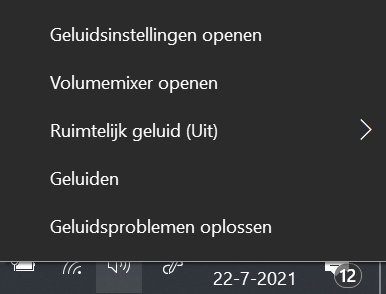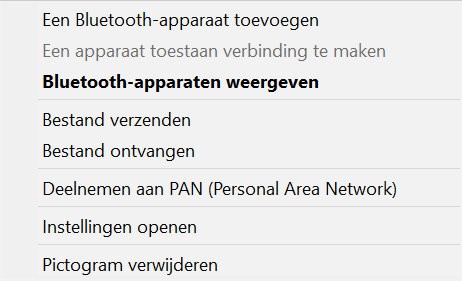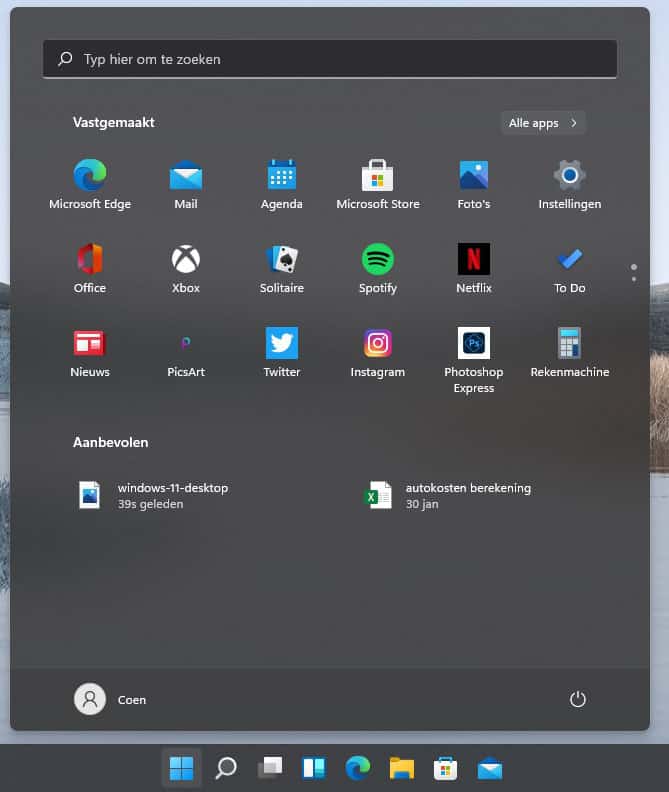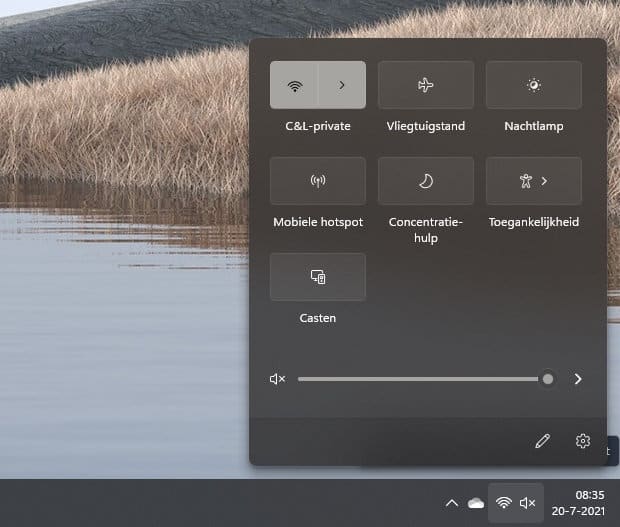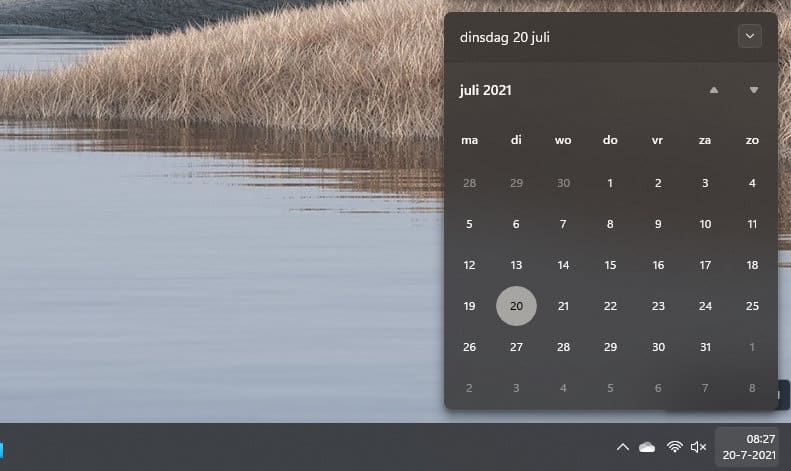Microsoft presented Windows 11 a few weeks ago. We have now been able to work with the new operating system. Although it is a preview, Microsoft clearly shows its vision. Where other media are talking about a simple redesign, we really see some differences. First of all, Microsoft is doing a big clean-up and a huge focus on touch-sensitive (touch screen) devices.
With Windows 11, Microsoft partly goes back in time. As far as we are concerned, Microsoft has the same vision for Windows 11 as it had for Windows 8, but ten years later. Once again, Microsoft is trying to release an operating system for multiple types of devices, in which touchscreens can play a major role. Windows 11 is a little less radical than Windows 8. The company has learned from its mistakes.
In the end, Windows 10 is an operating system with which Microsoft took a step back in the direction of Windows 7. Microsoft’s vision for Windows 8 was killed with the introduction of Windows 10. Now, that vision is more or less coming back.
- Microsoft’s vision for Windows 11 according to our analysis:
- Be suitable for touchscreens like tablets and perhaps (large) smartphones;
- Be more productive and efficient;
- Support more types of apps;
- Microsoft gets more control over app distribution;
- Be more focused on hybrid work (home and office) with virtual meetings;
- Offer a more secure operating system;
- Appeal to a broader target group, including young people.
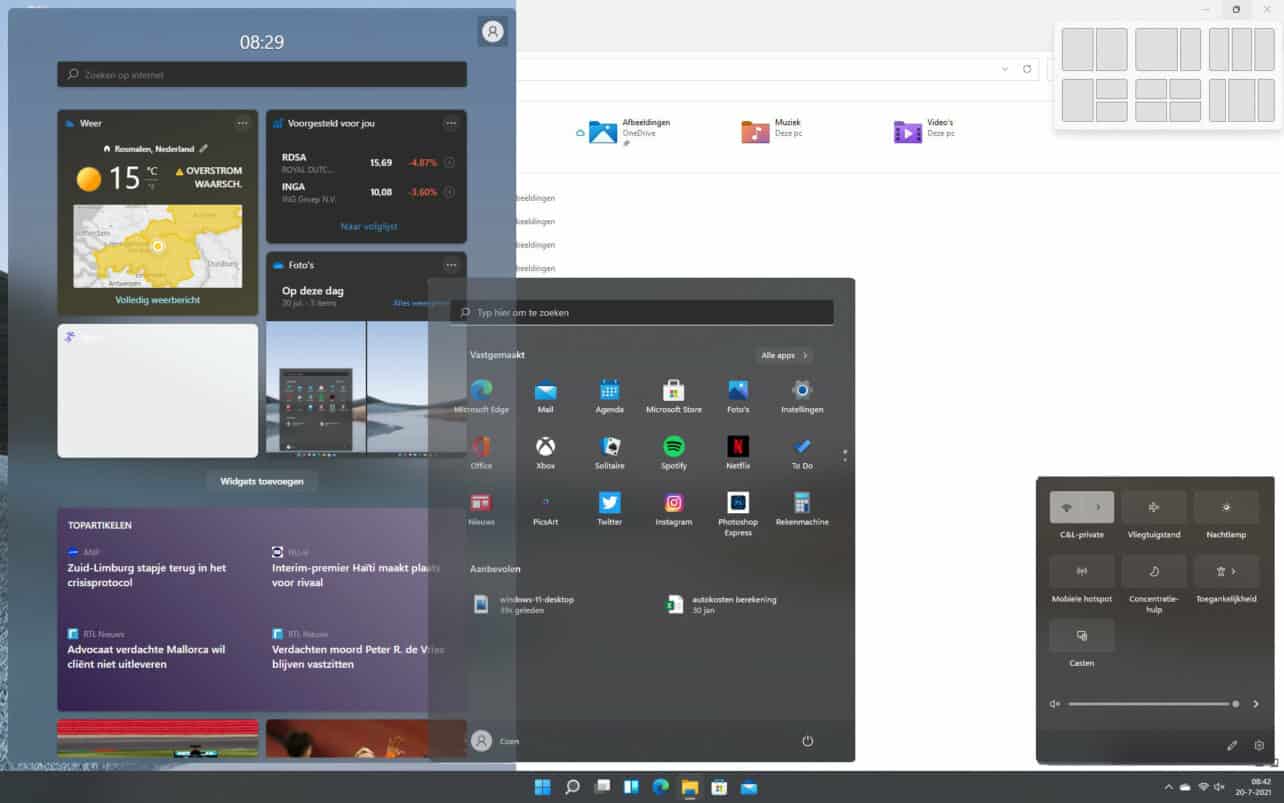
The lack of vision in Windows 10
Before we discuss Windows 11, we would like to mention Windows 10 for the full story. If you want to skip it, you can. Click here to go directly to our Windows 11 analysis.
Windows 10 would be the last Windows version. That statement came from Microsoft’s marketing department with the release of Windows 10. “From here on out, we’re going to update incrementally,, and that’s it.” With that message, Microsoft wanted to indicate that there would not be a new version three years after introducing Windows 10 in July 2015. The tech giant was proven right: it hasn’t turned out to be three years, but six.
If you look closely at Windows 10 and examine the elements separately, you can see that it is actually a mixed together operating system with elements designed for Windows 7 or even older, but also more modern elements that were originally designed for Windows 8. There is nothing wrong with that. A lot of software is made up of components that were designed for different versions, but at Microsoft, the design language was lost. Different designs are mixed up, with older elements appearing between modern features. It doesn’t seem quite finished, or it doesn’t seem to be in the right place.
Examples of inconsistent design
We understand that you’ve probably been working with Windows 10 for years and don’t immediately see it that way. Especially if you never really thought about a design. Therefore, we will share some examples with you. In Windows 10, when you right-click on the speaker icon to change your sound settings, you get a modern context menu. While the same action on the icon of, for example, Bluetooth, Spotify or Microsoft Teams brings up an outdated context menu.
Also, the overall design of Windows Explorer doesn’t match the rest of Windows 10. If you click on a file or folder with the right mouse button, you again get an outdated context menu. If you analyse Windows 10 in this way, you will come across dozens of such examples.
Windows 10 is an operating system without a vision, at launch it already took a step back in time. The main goal was to kill the criticism surrounding Windows 8.
For this article, we did not want to rely purely on our own analysis. Many analyses we read call Windows 11 nothing more than a new design. In our opinion, you have not looked closely enough at the operating system, and you cannot read between the lines. Windows 11 is much more than an updated design. A lot is going to change, especially on the back end. We foresee that Microsoft will eventually take more control with Windows 11. With more control, Microsoft can also offer a more secure operating system, which must also be suitable for many different devices. Ultimately, the vision of Windows 11 also says something about that of Windows 10. Namely, that Windows 10 is an operating system without a vision, at launch it already took a step back in time. The main goal was to kill the criticism surrounding Windows 8.
Surely Windows 10 is not that bad?
You probably think that Windows 10 is not so bad. You are absolutely right. Windows 10 is by no means a bad operating system. It’s the most successful Windows operating system ever. Microsoft’s ideas and design style introduced in Windows 8 and carried over to Windows 10 are much more modern, look better, and are much easier to use. Finding a setting in the new Settings menu is much easier than in the old-fashioned Control Panel. The search function in Windows 10 is just as good as Google when you are looking for a file or folder on your PC.
With the search function in Windows 10, the Start menu has become redundant for many users. Using the Windows key and partly typing the name of an application, a user can start an application in no time. Many times faster than navigating through an endless start menu. If people use the start menu at all, it is mainly the large tiles that Windows 10 inherited from Windows 8, rather than scrolling through the entire alphabetical list.
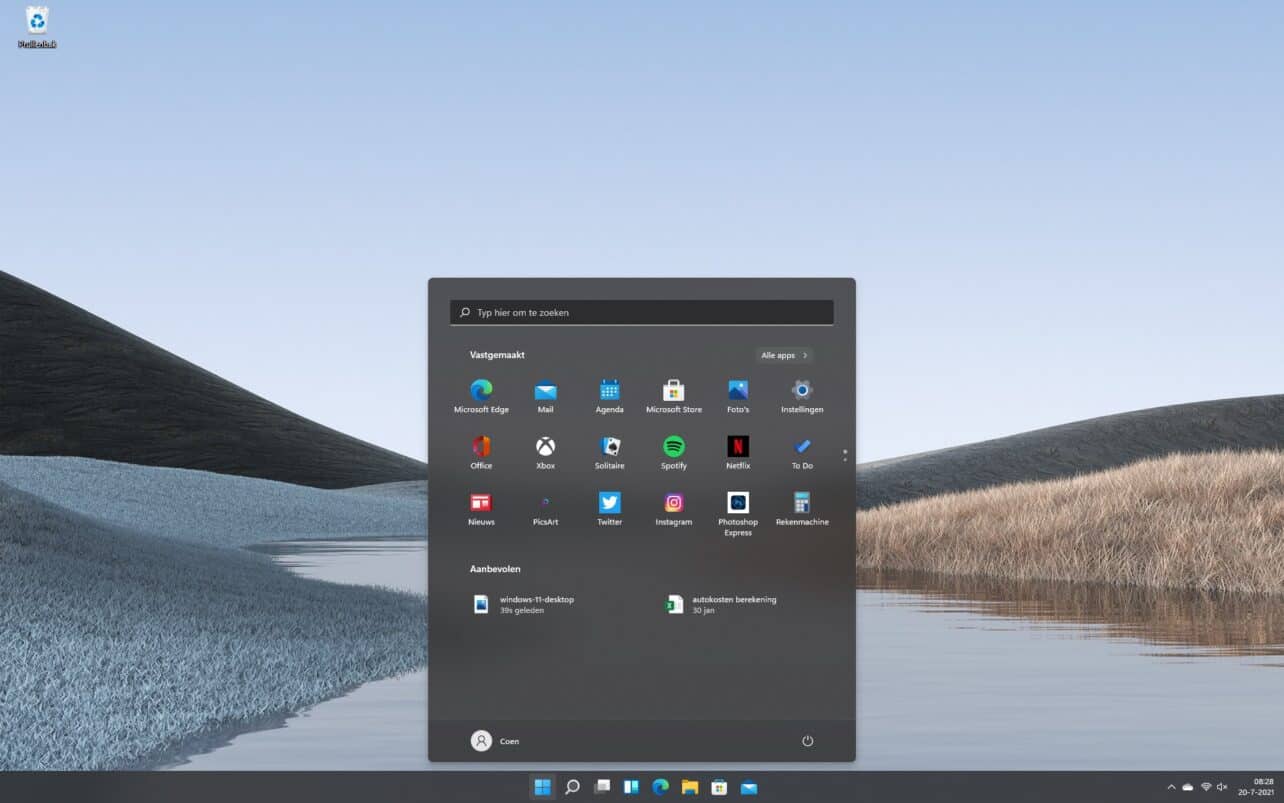
Windows 11 is cleaned up and contains two start menus
As mentioned, Microsoft does have a vision for Windows 11. The company is now trying to push that vision to make sure Windows 11 fits that vision as much as possible. This means that the entire operating system must now be designed uniformly. No more mixed experiences. In addition, Microsoft has also cleaned up certain features that are redundant or simply not successful. Think of Cortana, the personal assistant that never became successful.
Many outdated design elements have now been modernised. Not all of them yet, but a big leap forward has been made. Furthermore, Microsoft seems to rethink the design and layout of every element. Just like with the development of Windows 8, the company checks whether the design also works on a touch screen.
Primary Windows 11 start menu
Microsoft has taken a good look at the competition. Successful elements from mobile operating systems such as Android and iOS can be found in Windows 11. The start menu now features a search bar with horizontal dashboards with application icons underneath, just like on your smartphone or tablet. The dashboards can be arranged as you wish. Below the dashboards are a “Recommended” section. In Recommended, frequently used files and applications are shown based on context. If you work a lot in Excel in the morning and often use Spotify in the evening, the relevant application will be shown under the Recommended heading based on the time of day. In the example, it might even show you an Excel sheet that you often work in. There’s also the option to open an endless list of all applications. It still looks very annoying. Microsoft could take another look at that list that seems to never stop.
The big difference with previous versions of Windows is that it is a smaller start menu in the middle of the screen. Also, the start button is more or less in the middle. The (active) application icons in the taskbar are centred, with the start menu being the very first icon. This cannot be changed either.
Second Windows 11 start menu?
Microsoft has also developed a second start menu, although they won’t call it that. Microsoft is a huge fan of the interactive tiles that they introduced in Windows 8, these can also be found in the start menu of Windows 10. Android is also very successful with widgets. So successful that Apple also brought it to iOS in recent years. So Microsoft did not want to abandon these tiles and widgets. The advantage of widgets is also that you can offer customised content, and that increases the value of your product.
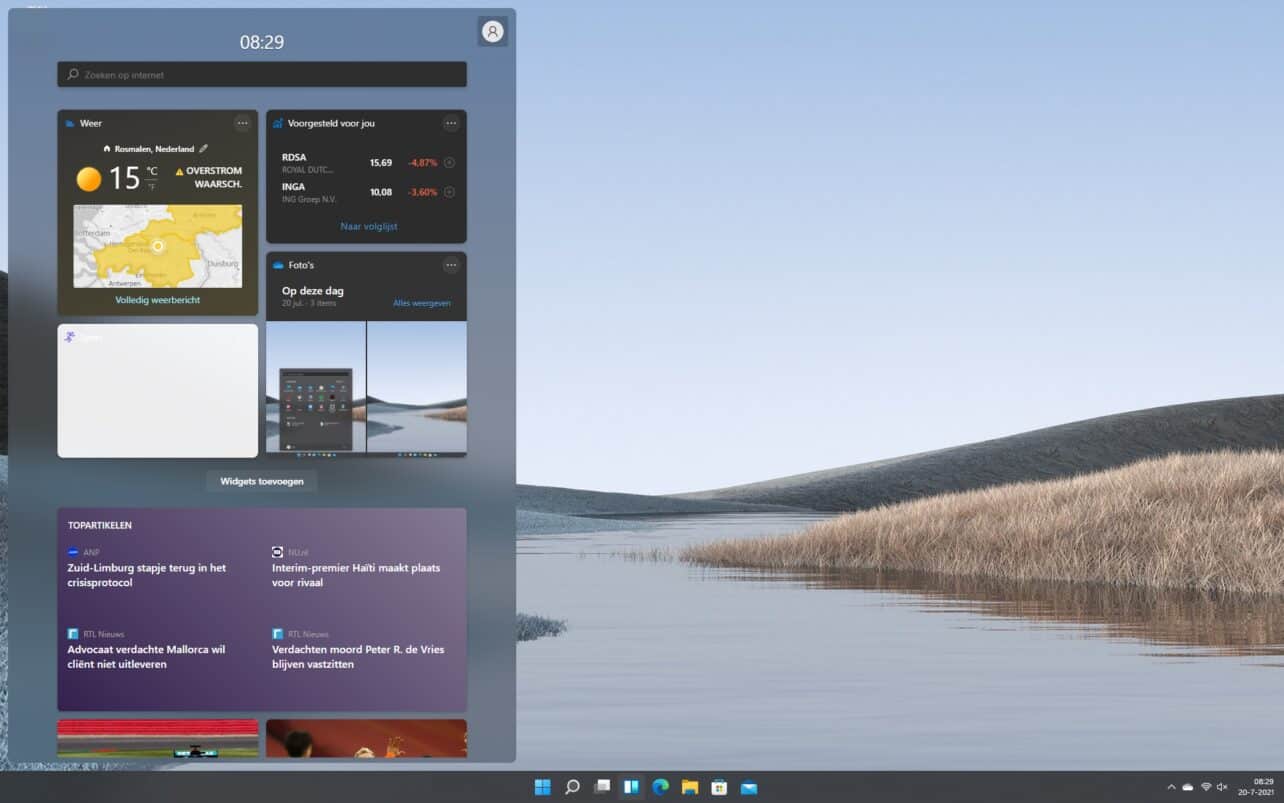
The second Start menu is a giant window that appears on the left side and is full of widgets. It shows, for example, the weather forecast, stock prices and news articles based on your interests. These news articles are provided by MSN.com, which in turn works with various publishers. The Start menu may look familiar to you. A similar feature has recently been added to Windows 10, recognisable by the weather forecast in your taskbar. When you click on it, a small window appears with the latest news. This is basically the same feature as the secondary Start menu in Windows 11, but in Windows 11, this window is four or five times bigger.
The focus on tablets or touchscreens in Windows 11
We can’t quite explain where Microsoft’s focus on touchscreens or tablets comes from. Perhaps the company is jealous of Apple’s success with the iPad. Microsoft has already burned through billions of euro’s in the smartphone market, including the acquisition of Nokia. We do not believe that Microsoft wants to or will burn its fingers on smartphones again.
The focus on touchscreens must then come from tablets or laptops. All Surface devices have touchscreens, and many laptops nowadays come with a touchscreen by default. The Techzine editorial team hardly ever uses the touchscreens on our laptops. That may be just us, but also in the field we hardly see people use touchscreens on laptops. Therefore, there seem to be limited opportunities here. Perhaps Microsoft sees more opportunities with Windows 11 tablets?
Fact is that Microsoft Windows 11 is completely designed to work well on a touchscreen without a physical keyboard or mouse. The start menus are spacious. The menus when clicking on the clock or the combined Network (WiFi) and Speaker icon in the taskbar are completely optimised for a touchscreen. The Windows Explorer has been stripped of a lot of options and buttons. What remains are a number of standard buttons that allow you to perform some basic actions without the risk of misclicking or touching via touchscreens.
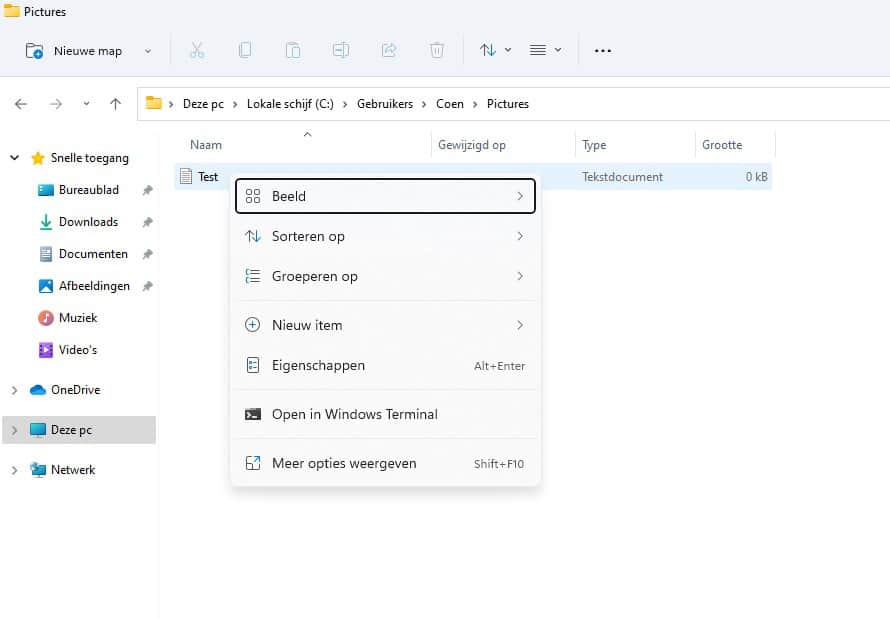
Looking at the layout of the Settings app, we go back to the setup of Windows 8 with all the categories on the left and the options on the right. If you take a closer look, the design seems to be copied 1-to-1 from Android tablets. Everything in Windows 11 is focused on simple touch control. The wait seems to be on tablets with which Microsoft wants to break the dominance of Apple.
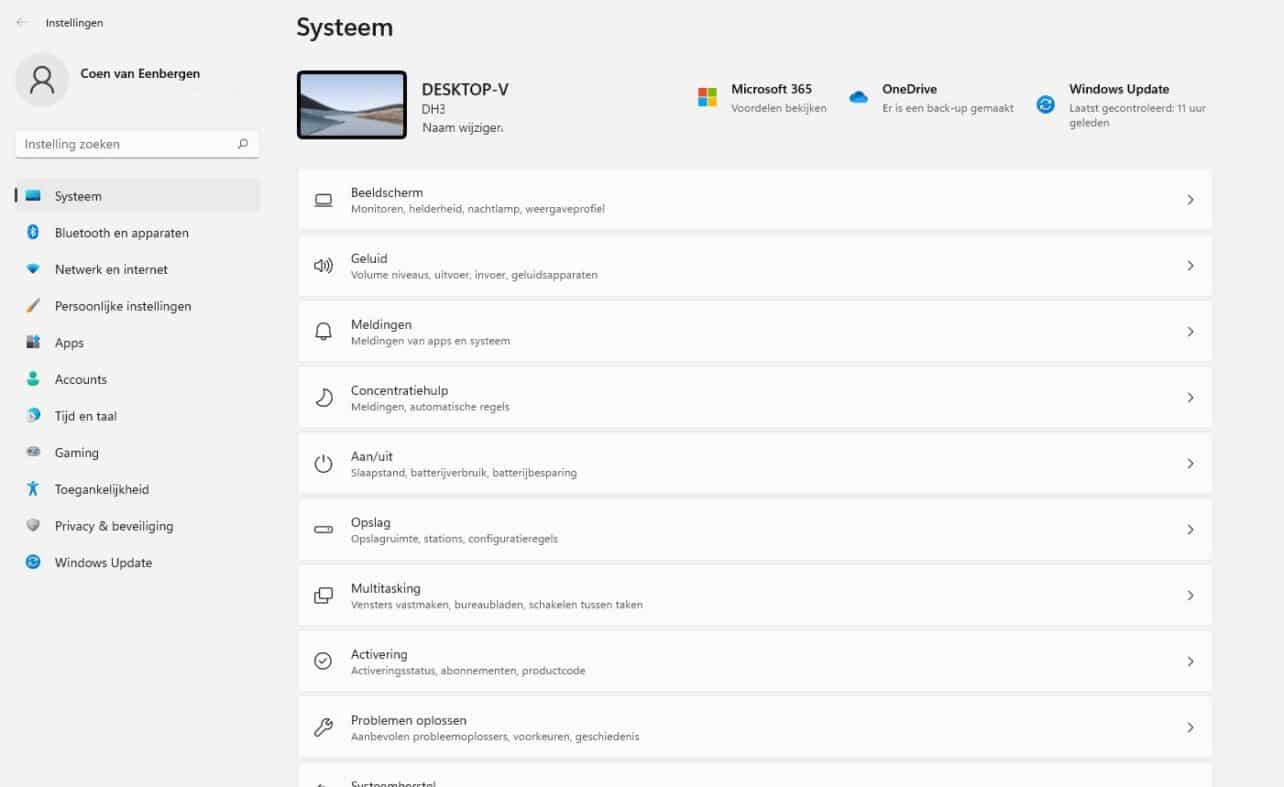
One of the features that is often used in Windows 10 is the so-called “snapping” of windows on the left or right side of the screen so that they take up 50 percent of the screen. Many users still find this difficult to do with the mouse. The shortcuts Windows + left arrow and Windows + right arrow are easier. In Windows 11, Microsoft has redesigned snapping. If you hover the mouse over the maximise icon, different options now appear on the screen, with which you can align the application directly to your wishes. You can even put three applications next to each other on the same monitor.

Cooperation with Amazon key to touchscreen success
Microsoft also seems to have learnt from its previous adventures. Because Windows 11 focuses much more on touchscreens, it also requires new applications that make optimal use of them. The problem with this situation is a chicken-and-egg story. Without applications, you don’t get users, without users, you don’t find a developer who wants to build an app. Microsoft seems to have found the solution with Amazon.
Microsoft has made it possible to run Android applications on Windows 11 without the developer having to do much. In order to offer Android applications in Windows 11, Microsoft could not turn to Google to use the Google Play Store apps. Google is Microsoft’s biggest competitor in the land of operating systems. Google will not be eager, or perhaps never, to agree to this. Amazon, on the other hand, which does not compete with Microsoft in the area of operating systems, is willing to cooperate. Amazon also has a large Android application store because it has been successfully selling tablets in the United States for years. Through this cooperation, Microsoft can suddenly offer hundreds of thousands of Android applications that are already optimised for touchscreens.
For Amazon, it means that its application store will suddenly become much more popular. Developers will now start adding new applications en masse. This will allow Amazon to sell its own Fire Tablets in more countries, because there are also many good apps available for them. A win-win cooperation in which two tech giants help each other.
The Amazon application store will soon be available to install on Windows 11. Applications can be installed from there. The Google applications will not be available. Applications that lean on Google Play Services won’t be available any time soon either. For primary Google functions in apps, such as search and Google Maps, Microsoft can now push its Bing portfolio again.
It remains to be seen exactly how Android will work on Windows 11, but many Android tablet applications can be used on Windows 11 right from the start.
The reincarnation of the Windows Store in Windows 11
Most users know about the existence of the Windows Store, but nobody actually uses it. The most popular apps in the Windows Store are Spotify, Netflix and Amazon Prime. Furthermore, the installation of applications still mainly happens outside the Windows Store, by downloading them first and then installing them. Microsoft now wants to change this. The intention is that the Windows Store will become the primary distribution model for applications in Windows 11.
To achieve this, Microsoft has made some concessions. Previously, Microsoft took 30 percent of the revenue from all applications and subscriptions sold through the Windows Store. That percentage will be reduced to 15 percent for applications that use Microsoft’s payment platform in their apps. If applications develop their own payment module or integrate a third-party payment module, they will not have to pay anything at all to Microsoft. It seems a matter of time before there will be ready-made modules for applications to make payments. Companies such as Adyen and Stripe may even embrace this.
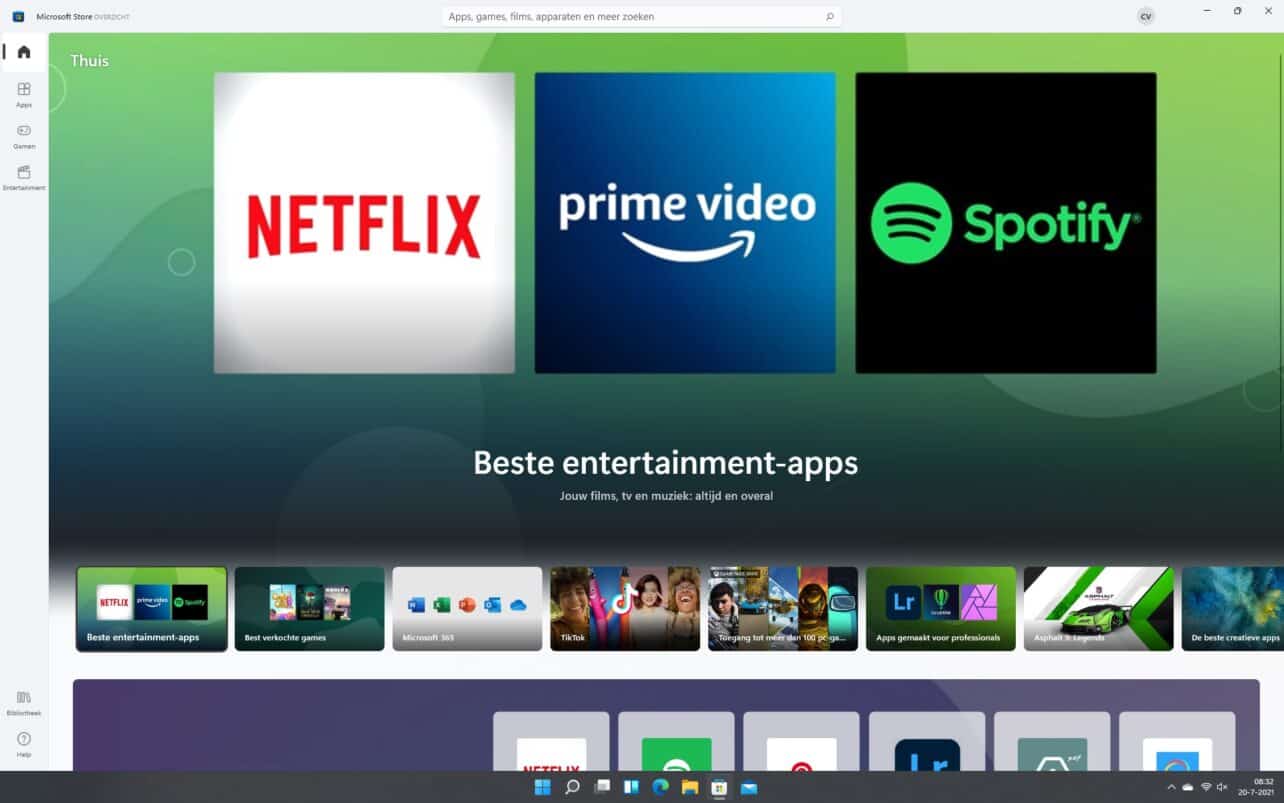
Furthermore, Microsoft has decided to support all kinds of applications in the Windows Store. Of course, Microsoft prefers to see modern applications that are already optimised for touchscreens, but that is not necessary. Applications developed in programming languages that Microsoft does not normally work with can also be installed in the Windows Store. Windows applications in the Windows Store can be developed in Win32, .NET, UWP, Xamarin, Electron, React Native, Java or Progressive Web Apps. Actually, almost anything that can run on Windows is welcome, even WebApps.
This will undoubtedly lead to a large increase in the number of apps. The question is whether users will also like the Windows Store better. Microsoft has already found companies like Adobe, Disney, TikTok and Zoom willing to distribute and update their apps via the Windows Store. With this, thehave created a new foundation for the Windows Store. Microsoft still needs to recruit an army of people to clean up the Windows Store and remove apps without added value. There is still a lot of junk in the Windows Store.
Collaboration and productivity are central in Windows 11
Another important reason for Microsoft to release Windows 11 is the new way of working. Many organisations want to do more with hybrid working and also have their employees work well together online. This requires new applications and possibilities. Microsoft is taking advantage of this with Windows 11 by better integrating Microsoft Teams into the operating system.
There will be a new Microsoft Teams application which should significantly improve online collaboration. This new application, called 2.0, is still under development and can unfortunately not yet be tested. We hope to be able to tell you more about it soon.
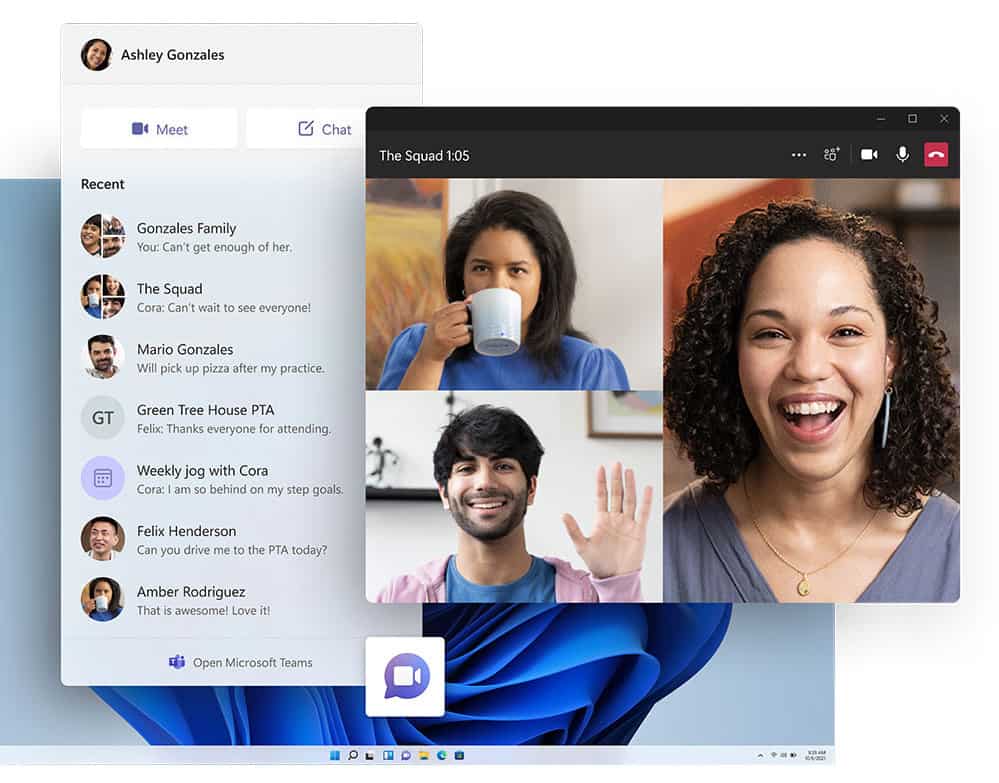
The fact that Microsoft is taking this seriously in Windows 11 shows that working from home, even if it’s only one or two days a week, is likely to stay at many companies. In terms of features within Teams, you mainly have to think of easy switching between chat and video meetings, but also easier collaboration in documents. At the moment, this doesn’t work flawlessly in Teams. We find it one of the biggest stumbling blocks of the application. We are therefore curious whether Microsoft will succeed in improving Teams significantly.
Other pain points like the amount of internal memory and the possibility to use multiple Teams accounts, something we already wrote a blog about, would also finally be tackled.
The future of Windows 11
Windows 11 is the beginning of a new Windows strategy. Microsoft hopes to win over some users with this version. Ultimately, you see that the private use of devices has mainly shifted towards mobile devices. People use an Android or iOS device at home for many things. Often a smartphone, but also regularly a tablet. Windows is still particularly popular among students and working people. Although it has more and more competition. Not only from Android and iOS, but also from ChromeOS and macOS. With Windows 11, Microsoft wants to make up for this and offer something in return.
If we look at what Microsoft is aiming for, it is that people should be more productive with Windows 11. It should offer a pleasant and fast experience and certainly not be complex. It should work easily and on many different types of devices. These are all things that matter in order to convince the user. They are also very important points for students and working people.
Security: open versus closed operating system
The operating system must also be secure. This is perhaps a greater challenge. Security is a whole industry in itself, with those with good intentions and those with bad intentions. It provides a long list of potential dangers. Competitors such as iOS and ChromeOS offer a completely closed operating system and are therefore gaining ground. Microsoft will also have to do something in the area of security to defend itself against this. It has not yet announced anything about this. However, we suspect that Windows 11 will be more closed, with the Android model as the most logical choice.
With the Android model, you can no longer download and install applications in a normal situation. By default, you must install all applications through the application store. On Android, that is the Google Play Store, on Windows it is the Windows Store. In the Windows Store, you should be able to find, install and update all applications. By working this way, Microsoft can build in a lot of extra controls and security measures. This does not provide a 100 percent security either, but it is much safer than a completely open operating system.
The attentive reader will not have forgotten the words “by default”. On Android, you can check the box next to Install applications from unknown sources in the settings. This allows you to install applications outside of the Google Play Store. We expect that Microsoft will also choose this. By default, everything goes through the Windows Store, but you can also check the option to download and install applications directly by changing the settings of the OS.
The fact that Microsoft has not yet said anything about this, could be a strategy. Introducing such a policy only makes sense if you have sufficient supply. As long as the Windows Store remains as it is now in terms of the number of applications and quality, it will not be successful. Microsoft will have to ensure that it can deliver all known and frequently used applications from the Windows Store. Only then will it be possible to introduce such a strict rule. If it is introduced too quickly, this security feature is more of a burden to be circumvented than something useful. As described earlier, Microsoft is currently doing everything to make the Windows Store attractive for application developers.
Windows 11 also runs in the cloud
Microsoft has announced that this summer Windows 365 Cloud PC will become available. Windows 11 will connect seamlessly to this. The Windows 365 Cloud PC is a complete Windows installation that runs in Microsoft’s Azure cloud. It can be used entirely by a user, so that all activity and all data takes place in the cloud and is displayed on the employee’s PC via a secure connection. However, it can also be an extension to offer certain applications a more secure environment, or to keep the data centralised. In that case, only one application can run in the cloud and the rest on the employee’s system. Working with applications on the PC and applications in the cloud can then be used in a hybrid form. A Windows 365 Cloud PC like this becomes part of the Microsoft 365 subscriptions, with which companies can also purchase Office, e-mail services, Microsoft Teams or Dynamics ERP, among other things.
Availability of Windows 11
After the summer, Microsoft will release one last major Windows 10 update. Support for Windows 10 will end in 2027. The question is how many companies will still be using Windows 10, because the upgrade to Windows 11 is expected in October. Reportedly, the update will be free for all Windows users. Microsoft itself does not explicitly communicate that Windows 11 will be available in October, but Intel accidentally leaked the information. However, Microsoft has previously stated that most users will automatically be migrated at the beginning of 2022. Earlier seems possible now that October 2021 has been confirmed by Intel. Companies can of course schedule the upgrade when they are ready.
Preliminary conclusion Windows 11
Our preliminary conclusion is that Microsoft has recovered. With Windows 11, the company wants to create a stronger Windows ecosystem and stay one step ahead of the competition. The developments in recent years will contribute to this. The experiences with Windows 10, but also all Surface products. The competition for Windows is stronger than ever, including Android and iOS, but also ChromeOS and macOS. Working from home, the demand for hybrid working and the lack of good digital collaboration possibilities offer opportunities. Furthermore, cybersecurity is increasingly high on the agenda, because nobody wants ransomware or other malware. All these issues seem to be on Microsoft’s radar.
Finally, we also see similarities with Windows 8. The operating system of almost ten years ago was aimed more at touchscreens, and this is also the case with Windows 11. The question remains how Windows 11 will eventually become, but also how users and companies will react to it. We think it is a step forward and that Microsoft has so far found a good balance in the changes, it is not as different as Windows 8 was.
Microsoft Teams will be central to Windows 11 for business. We haven’t been able to test this yet, but the usability and speed of this application will be hugely important for the success of Windows 11. Visually, it looks good. Whether it also works well, we will have to wait and see.

